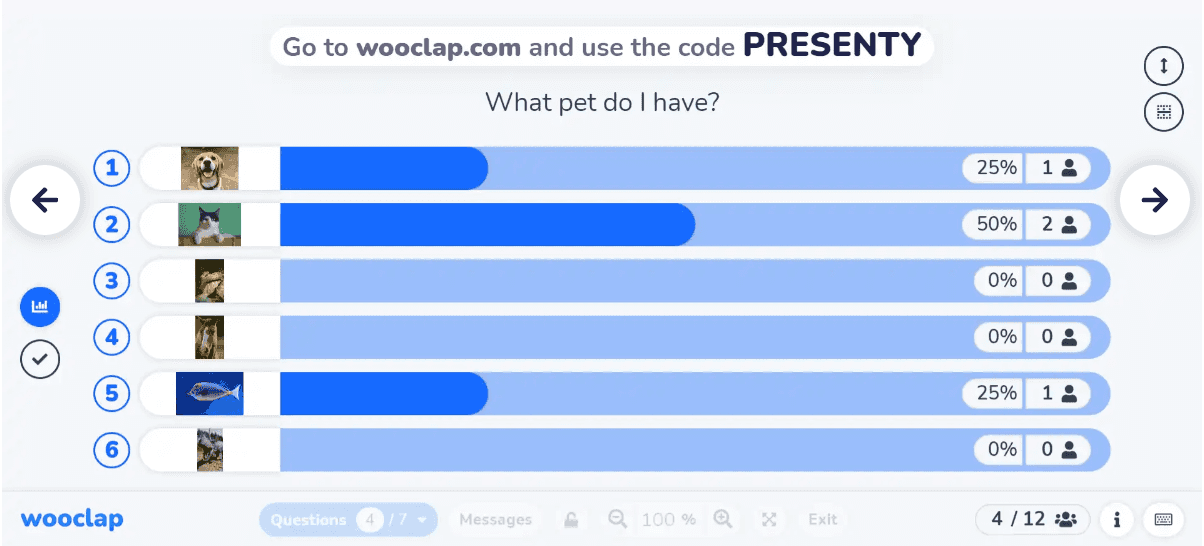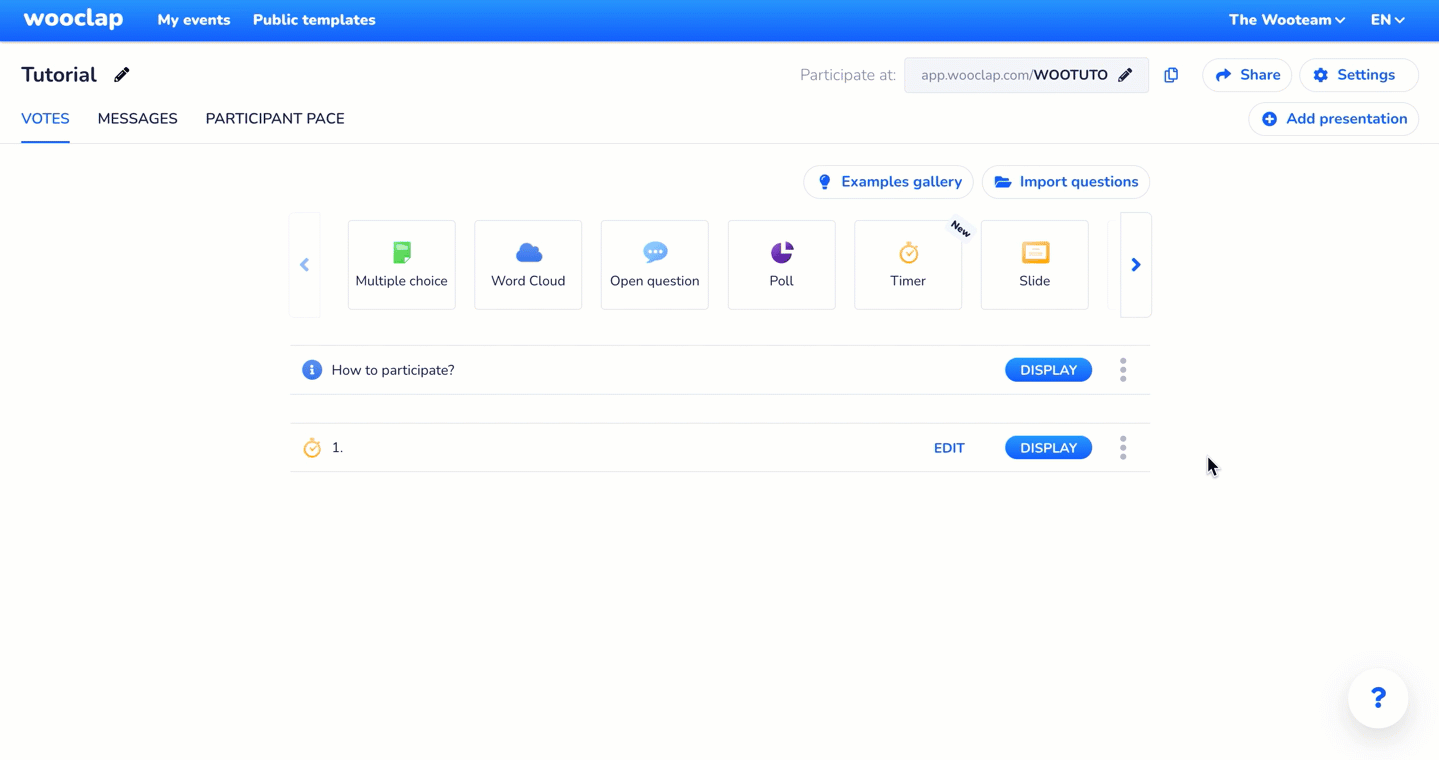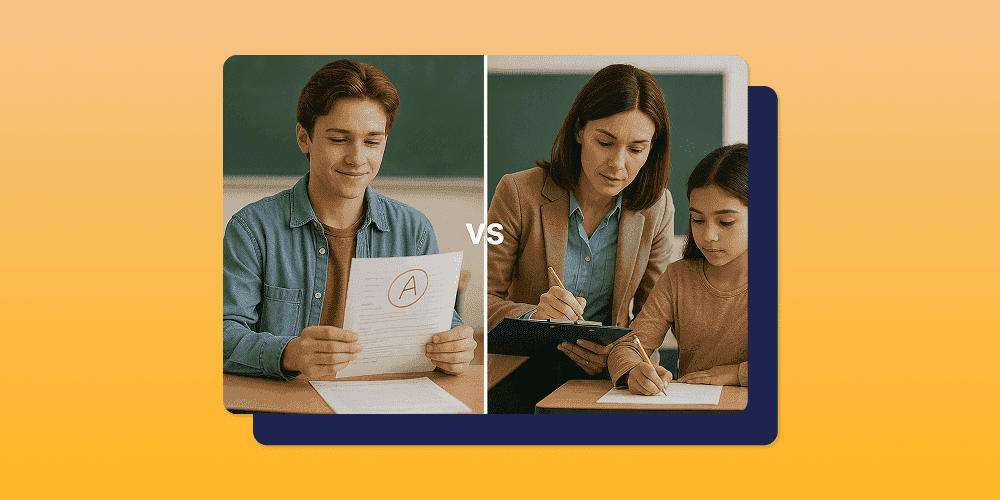
American summer tour! Wooclap will be at InstructureCon 2025
Come say hi at booth 41 from July 22nd to July 24th in Spokane, Washington
5 Student engagement strategies that really work
03.01.2025 • 3 minutes

Unilateral, passive teaching does not involve students in the learning process –that, we all know. The traditional teaching method where the teacher stands behind their desk and delivers a monologue to the classroom is clearly outdated. Instead, research has been increasingly focusing on finding ways to involve students in the learning process for better results (e.g. Himmele & Himmele, 2011).
Unfortunately, because distractions of all sorts are increasingly available, it has become even harder to grab students’ attention (children, teenagers and young adults), let alone keep them interested! But do not fret: here are a few student engagement strategies and activities that actually work and will help you involve your students for a more dynamic, active and efficient learning process!
What is student engagement?
In a classroom or at school, classroom engagement is a must in the learning process. It’s what research calls active learning, and it implies that students should play an active role (vs. passive) in their own learning. In order to achieve this, their implication and engagement are essential, both in and outside the classroom (i.e. while doing homework, or learning and studying at home).
There are five types of engagement: physical, emotional, behavioral, intellectual and social. For obvious reasons, a traditional class can hardly engage all of them at once!
But if you wish to make your teaching more dynamic, know that several strategies and techniques do exist.
Here’s an overview of those strategies, and we’ve mustered up examples for you to put them into practice. Are you looking for student engagement activities for college or university? Let us share with you some strategies that work for all levels.

Strategy No. 1: Set out the rules from the start
In order to promote students’ social engagement, making the classroom a safe space is essential. Take the time to know each other well at the beginning of the course, and you can (and should) set out the rules from the start. These rules will set the framework for your lessons, and they will reassure your students, who will know they’re working in a well-known learning environment.
Rituals and repetition are reassuring for younger students (and not so young), helping them feel at ease. They are a great way to start learning in a calm way.
Activity: “Beginning of the class” ritual
Set up a ritual to begin your class: the repetition of this activity will give your students a habit. Knowing when and how your class begins will help them feel safe.
This ritual could be a question or an icebreaker activity, or a quote students have to reflect on. Allow them 3 minutes to think individually and then take 7 minutes to share their answers, in pairs or with the whole class. Why not choose a quote to introduce the topic you’ll be discussing during the lesson?
Tip: thanks to the Wooclap interactive tool, you can share the icebreaker question and have everyone answer individually via their computers or smartphones. Make this moment interactive and save time!

Strategy No. 2: Use time in a smart way and diversify activities
Every teacher knows this: setting the right pace is the key to success when it comes to avoiding bored or overtired students, and keeping their attention, whatever the teaching style. Suggest a variety of activities (individual thinking, answering questions, writing, oral presentations, etc.) and formats, and remember to add breaks!
Activity: Stretch-out break
Let’s focus on physical engagement here. During a long lesson, remember to add breaks and allow your students to move and go from one place to another within the classroom (or outside!). This will keep them physically engaged: this will improve their ability to focus!
You can suggest they stand in a circle and do a few stretching exercises, then take 5 minutes to move around, chat with their peers, and return to their seats.
Strategy No. 3: Use up space
Movement can be a very useful aspect in learning: if your students have a hard time staying still, make them move! Find ways to work efficiently while engaging them physically. Finding the right balance is the key to success!
Activity: The two circles
Place your students in two circles, where one of them is inside the other. Then, the students from the inner circle turn around to face a student from the outer circle. They then have to discuss a specific topic, ask and answer questions, share their ideas, during a given amount of time.
When time’s out, the students in the inner circle move two spots further to face a new person. Set the timer again and repeat the exercise!
Strategy No. 4: Give students responsibilities
Nothing works better when trying to involve students than handing them out a role to play or a responsibility: it’s a very efficient teaching strategy! Use it for work in groups: each student will know what is expected of them!
Activity: Working in groups
Separate your students into groups of 4-5 to work on projects or difficult equations. If there is a set time to finish the exercise, distribute the following roles:
- secretary (takes notes);
- reporter (shows the group’s work to the whole class);
- timekeeper (keeps a close eye on the watch);
- moderator (allows everyone to speak, holds participants to time limits, etc.).
Tip: thanks to its interactive presentation feature, Wooclap helps you share the topic with the whole class, including a countdown for everyone to know how much time there’s left. Remember to use these interactive tools for better student engagement and a more effective learning process!

Use the Wooclap timer to know how much time there’s left.
Strategy No. 5: Involve everyone and promote collective intelligence
As we said before, traditional classroom sessions are boring. To involve every student, the teacher has to be a guide. Although teachers hold knowledge, they shouldn’t be afraid to involve students in the process and make them work together. Listening to their peers is important, and collaborative classrooms often boast better results!
Play with the different formats and have students work in pairs, groups of three, or more. They will, of course, require guidance! Why not try out the following exercise?
Activity: The bounce card
Have students work in pairs and discuss a topic or a question. After their first round, hand out “bounce cards” to discuss more in detail, answering questions such as: “explain what you said earlier”, “report what your classmate said in your own words”, or “do you agree with your classmate? Why?”
This will require students to think more in detail, express and analyse their thoughts. Then take the bounce card back and hand out a different one to have them all go around the classroom. A fun, creative and dynamic activity for your students!
Writer

The Wooclap team
Make learning awesome & effective
A monthly summary of our product updates and our latest published content, directly in your inbox.



